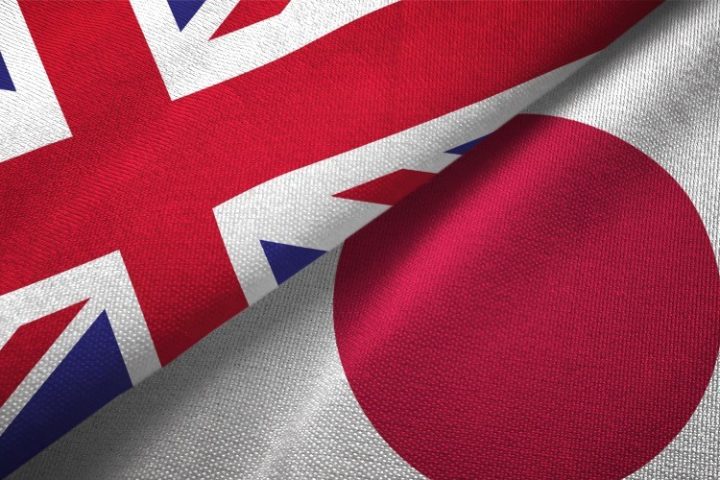
Japan, the U.K., and Italy are collaborating to build their next-generation jet fighters, in a ground-breaking partnership encompassing Asia and Europe. This partnership is Japan’s first major industrial defense effort since World War II outside of cooperation with the United States.
The deal, which Reuters reported on this past July, purports to prepare an advanced front-line fighter for operation by 2035 by combining the British-led Future Combat Air System project, also known as Tempest, with Japan’s F-X program in a venture called the Global Combat Air Programme (GCAP). Details were based on a statement made by the three countries last December 9.
This agreement is meant to help Japan counter the growing military power of China and Russia in light of Chinese pugilism around Japan and Taiwan and the Ukraine-Russia crisis. Moreover, the deal can offer Britain a larger security role in the region.
“We are committed to upholding the rules-based, free and open international order, which is more important than ever at a time when these principles are contested, and threats and aggression are increasing,” the three countries declared in a joint leaders’ statement.
This month, Japan is also supposed to declare its military build-up plan, which is slated to double defense spending to about two percent of gross domestic product over five years, amid the worsening regional security situation.
U.K. Prime Minister Rishi Sunak separately announced that his country needed to remain at the forefront of defense technology and that this deal would create new jobs.
Britain’s BAE Systems PLC, Japan’s Mitsubishi Heavy Industries, and Italy’s Leonardo will spearhead the aircraft design. This design will have advanced digital capabilities in AI and cyber warfare, based on statements from Japan’s Ministry of Defense.
European missile maker MBDA will also participate in the project, together with avionics manufacturer Mitsubishi Electric Corp. Rolls-Royce PLC, IHI Corp, and Avio Aero will work on the engine, the ministry added.
The three countries, however, have not discussed intricate details such as work shares or the location of the development.
Britain also hopes Japan can enhance the way it offers security clearances to contractors who will build the aircraft, sources with knowledge of the discussion told Reuters.
Other countries could join the project, Britain declared, elaborating that the fighter, which will replace its Typhoon fighters and complement its F-35 Lightning fleet, will be compatible with fighters flown by other North Atlantic Treaty Organization (NATO) partners.
The three countries’ public affirmation of the jet fighter project comes days after companies in France, Germany, and Spain confirmed the next phase of a rival initiative to build a next-generation fighter, slated to be in operation by 2040.
The United States, which is obliged to defend all three countries through its NATO membership and a security pact with Japan, was in favor of the joint Europe-Japan agreement.
“The United States supports Japan’s security and defense cooperation with like-minded allies and partners, including with the United Kingdom and Italy,” the U.S. Department of Defence said in a joint statement with Japan’s Ministry of Defense.
At first, Japan had mulled over building its next fighter under the aegis of U.S. defense contractor Lockheed Martin Corp., which had proposed an aircraft that combined the F-22 airframe with the flight systems from the F-35 fighter.
Japan’s ruling party also previously deliberated whether to loosen military equipment export rules, partly because without any rule amendments, Britain would be unable to sell any jet fighters it builds with Japan, according to former defense minister Itsunori Onodera.
“Japan could not oppose exports and neither could we insist that Japanese components be removed, so we are discussing what we can do about that,” said Onodera, chairman of the Liberal Democratic Party’s (LDP) Research Commission on National Security.
In context, Japan terminated a ban on military exports in 2014 to enhance overseas sales. It envisioned that the amendment would permit its armed forces to reduce procurement costs and provide domestic arms makers such as Mitsubishi Heavy Industries access to foreign markets to increase profits and boost the nation’s defense industry.
The much-anticipated export boom, nonetheless, did not materialize, as Japan only permitted the sales of non-lethal gear such as surveillance and rescue equipment.
“If we are going to sell beyond the countries we jointly develop with, we will need to settle the discussion at home,” Onodera said.
As part of its largest military boost since World War II, Japan is slated to obtain fresh munitions such as longer-range missiles, spend on cyber defenses, and establish a combined air, sea and land command headquarters that will collaborate more with US forces.
LDP lawmakers, Onodera said, are also in talks about a joint U.S.-Japan command structure that could be established for national emergencies.
“In order to defend Japan, we would be working with the United States to deploy units, so it’s only natural that we would want to discuss having a combined command,” he said.
For more than 70 years, Japan has depended on pledges from the United States, its most vital ally, for defense in the event of an attack.
Japan hosts the largest contingent of overseas American troops and frequently conducts drills with them. Besides, it has bought more American-made F-35 stealth fighter jets than any other country outside the United States.
Yet in recent months, following a deteriorating global geopolitical landscape, Japan is beginning to adopt a self-reliant defense strategy. This shift in military policy could slowly tilt the balance of power in Asia. Military-wise, Japan could eventually become more of an equal partner with the United States rather than simply being a military protectorate. Also, Japan’s military direction complements the desire of U.S. leaders for the nation to function as a more assertive military counter to China.



